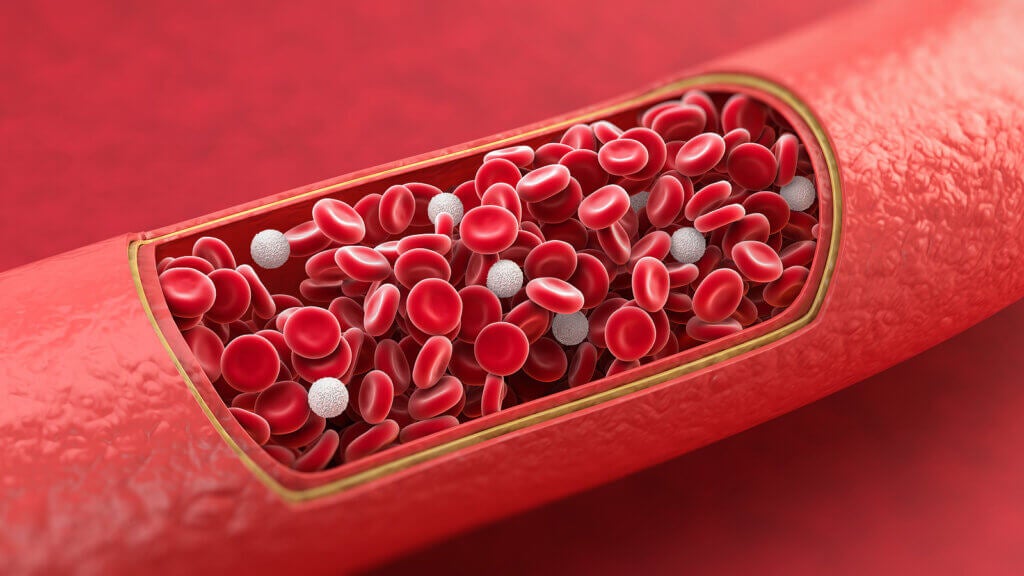The 5 Types of Vinegar and Their Properties


Escrito y verificado por el nutricionista Saúl Sánchez
Vinegar is one of the most popular ingredients to dress salads. It works well with almost any vegetable. In addition, it has health benefits when introduced in moderate amounts and in the context of a balanced and varied diet. Keep in mind that there are several different types of vinegar. Each one of them has some peculiarities at the organoleptic level, but their benefits also vary at the nutritional level. For this reason, we’ll review all of them so that you’re clear about which is the best choice.
1. Apple cider vinegar
Among the most used types of vinegar is apple cider vinegar. This product is obtained from fruit and has a significant concentration of vitamins A and B. In addition, it’s capable of providing essential fatty acids. Nor should we neglect its mineral content, such as phosphorus, calcium, and potassium.
It’s an element that can be used alone or in combination with extra virgin olive oil. In this way, a perfect mix is obtained for dressing salads that can be complemented with other culinary spices.
However, the most important thing about this product are the benefits that its consumption generates on health. If it’s ingested regularly, it’s possible to improve certain biochemical parameters, which reduces the incidence of some chronic and complex diseases in the medium term. Among the main positive effects, the following stand out.
Helps lower blood sugar levels
Keeping your blood sugars out of control is really troublesome. Little by little, insulin resistance develops, which ends up generating inefficiency at the metabolic level. It’s considered the precursor to type 2 diabetes, a disease linked to the development of other major health problems.
To avoid a situation of this caliber, implementing a change at the dietary level is usually recommended. It’s clear that reducing carbohydrates in the diet helps. Limiting simple sugars and practicing physical exercise generates important protection.
But it’s also possible to include certain foods with hypoglycemic properties. Among the most famous is cinnamon. However, apple cider vinegar has a very similar capacity. This is evidenced by a study published in the journal Clinical Nutrition ESPEN. It even improves the lipid profile of the body.
Use apple cider vinegar to dress the vegetables or consume a couple of tablespoons of it before sleeping is recommended. In this way, blood glucose levels are reduced, which is considered positive for health in the medium term.
Contributes to weight loss

Improving the efficiency of metabolism is a key aspect when the goal is to promote weight loss. If there are problems when choosing the optimal substrate for energy genesis, it’s likely that you’ll end up accumulating excess fat. To avoid reaching a situation of this type, it’s important to improve what’s known as metabolic flexibility.
This concept refers to the body’s ability to use fat for energy production while low or medium-intensity activities are carried out. In fact, an increase in this parameter is related to a reduction in the risk of suffering from cancer or its evolution. This is stated by a study published in the journal Seminars in Cancer Biology.
Strength training and diet improvement are essential to increase metabolic flexibility. As body weight is reduced, greater efficiency is experienced in the use of energy substrates. But there are also certain components of the diet that can speed up the process.
One of them is apple cider vinegar. By increasing insulin sensitivity, it promotes weight loss. Of course, to experience this benefit, it will have to be consumed in the context of a hypocaloric diet.
There’s evidence that the daily intake of apple cider vinegar stimulates weight loss. However, the conclusions are still not entirely solid. It’s committed to the metabolic effect of food, as well as an increase in the feeling of satiety. Most articles recommend consuming a couple of tablespoons a day to experience beneficial effects.
Improves lipid profile
For many years, it was claimed that keeping cholesterol high could lead to increased cardiovascular risk. Today, this theory is questioned. Even so, it’s argued that oxidation of lipoproteins is capable of increasing their aggregation, which would cause atheroma plaques.
In order to reduce these oxidative and inflammatory mechanisms, the regular consumption of foods with antioxidant phytonutrients is proposed. Apple cider vinegar is among them. Their inclusion in the diet won’t cause a significant alteration in HDL and LDL levels, but it will cause a reduction in their oxidized versions, which is related to cardiovascular protection.
It’s important to take other measures to prevent alterations in the biochemistry of the blood from causing problems in the medium term. With this objective in mind, it’s advisable to increase the presence of fatty acids from the omega-3 series in the diet, in turn reducing the intake of simple sugars and trans fats. These last elements have harmful inflammatory capacities.
Sports practice is also an essential protective factor. Thanks to physical exercise, the genesis of endogenous antioxidant compounds is promoted. Likewise, inflammatory mechanisms are modulated, increasing their efficiency and preventing them from developing uncontrollably.
How to incorporate apple cider vinegar in the kitchen?
The best way to include apple cider vinegar in your diet is by preparing salad dressings and mayonnaise. Some people dilute it in water and consume it as a drink. However, its taste may not please everyone. It’s best to start by introducing small doses and gradually increase the amount.
Even so, it’s not recommended to exceed 3 or 4 tablespoons a day in total. Doing so could lead to harmful effects such as tooth enamel damage or drug interactions. At the same time, it’s always best to choose organic varieties that haven’t been subjected to filtration.
2. Wine vinegar
Also amount the different types of vinegar is wine vinegar, which is one of the most used products in the Mediterranean diet. Along with olive oil, it’s used to enhance the flavor of many foods, especially those of plant origin. It typically has a darker color than apple cider vinegar, as well as a stronger flavor.
It should be noted that the inclusion of this product in the diet can also generate certain benefits. Among them are the following.
Acts as an antioxidant
Oxidation processes take place on a daily basis in the human body. However, when these are given in excess, harmful effects can appear. The accumulation of free radicals in the tissues increases systemic inflammatory reactions, hinders the function of various organs, and can even favor mutations.
For this reason, it’s advisable to ensure the contribution of foods in the diet that contain phytonutrients with antioxidant capacity. These compounds neutralize the formation of reactive oxygen species, which translates into a lower incidence of many chronic and complex diseases. This is evidenced by an investigation published in the journal Infectious Disorders Drug Targets.
Improves digestions
The acidic nature of wine vinegar can help facilitate stomach function, thus generating an effective breakdown of food more quickly. It’s usually introduced into the diet of those people who often experience heartburn or reflux.
In any case, it’s important to evaluate and identify the source of this problem. For example, if the cause is a hiatal hernia or a proliferation of Helicobacter pylori, this may not be the best solution. However, when a person presents slow and heavy digestion on a regular basis, without apparent cause, wine vinegar helps to reduce the associated discomfort.
Protects against microbial infections
The acidic character of wine vinegar allows it to generate protection against poisoning by various germs. It can be added to food with the aim of exterminating possible pathogenic microbes found on its surface, which is why it’s considered a useful element in the context of food hygiene.
3. Rice vinegar
Rice vinegar is a product with mild organoleptic characteristics and is produced from the fermentation of this grain itself. It has a white or golden color, which contrasts quite a bit with the dark color obtained from wine. It’s used primarily in Asian cuisine, although it has spread throughout many other countries.
Rice vinegar is also capable of providing a series of health benefits, as long as it’s consumed in the context of a varied diet. Of course, it’s important to avoid adding sugar, a very common practice in the preparation of certain oriental dishes such as sushi.
Improves immune function
One of the main properties of rice vinegar is its ability to activate the functioning of the body’s defenses. This is due to the presence of amino acids, components of proteins that act on the immune system, improving its role.
To achieve this effect, it’s advisable to consume the product on a daily basis. Unlike the previous types of vinegar, rice vinegar can be ingested in greater quantities. In fact, the recommended dose is between 10 and 25 milliliters per day.
However, to ensure good immune function, it’s essential that the levels of vitamin C and zinc are within the optimal ranges. Both elements stimulate the differentiation and action of the cells of the white series, which are responsible for neutralizing and fighting pathogens.
Protects against premature aging
Antioxidants aren’t only capable of reducing the incidence of complex diseases. They also prevent the signs of aging, as stated by research published in the journal Clinical Interventions in Aging. Neutralizing the formation of free radicals is essential to ensure that the elasticity of the skin is maintained.
In addition, it’s important to ensure the presence in the diet of other nutrients related to the synthesis of collagen, the most abundant protein in the human body. This is responsible for guaranteeing the functionality of tissue, especially in terms of elastic and firmness characteristics. Vitamins A and C stand out among them.
Improves digestion

The acetic acid contained in rice vinegar helps to facilitate digestion, thus making optimal use of nutrients. There’s even some evidence that this product could generate benefits for the intestinal microbiota. When it’s kept healthy, the risk of developing inflammatory diseases of the digestive tract is reduced.
Ensuring the diversity and density of the bacterial flora increases the immune response against a large number of pathogenic microorganisms. In this way, a reduction in the risk of contracting infectious diseases is experienced.
4. Sherry vinegar
The next product on our list of types of vinegar is sherry vinegar, which is obtained from the fermentation of a wine produced in a particular area of the Iberian Peninsula. These are made mainly in the Andalusia area. It has an amber color with mahogany tones and its flavor presents hints of nuts. It’s used to season or season food or even to make reductions and pickles.
According to sources already cited, vinegar in general is a product that stands out from a nutritional point of view due to its diuretic properties, which is why it helps prevent fluid retention. Besides, it has antioxidant elements inside and, in the same way as apple cider vinegar, it’s capable of generating an anti-diabetic effect.
This product can even support bone health by helping to fix calcium in the bones. This effect is especially decisive in women, who tend to lose this mineral after menopause. If the nutritional intake up to that point isn’t optimal, osteoporosis could help.
5. Honey vinegar
Although many people are unaware of it, honey vinegar is one of the oldest types of vinegar used by humans. It was a very appreciated product in Egypt a couple of thousand years ago. It stands out mainly for its organoleptic characteristics, as it has a certain sweet touch and allows you to enhance the flavor of food.
In addition to the classic use for dressing salads, it’s used mainly with meat and fish to achieve a marinating process.
It should be noted that honey vinegar contains a large amount of phytochemical compounds with antioxidant activity. For this reason, it could be useful to prevent the development of complex diseases. However, there aren’t many scientific studies evaluating its properties or the results of its usual long-term intake.
Include vinegar in your regular diet
Vinegar isn’t only a product that helps to enhance the flavors or improve the organoleptic characteristics of certain dishes. It’s also capable of generating beneficial health effects. For this reason, its inclusion in the diet on a regular basis is recommended.
However, there are many different types of vinegar. Due to their characteristics, each of them is more suitable for a specific type of dish. It’s important to keep testing to see which foods each variety best matches. Likewise, adding sugar to this ingredient should be avoided so as not to cause an alteration in blood glucose levels.
Vinegar is one of the most popular ingredients to dress salads. It works well with almost any vegetable. In addition, it has health benefits when introduced in moderate amounts and in the context of a balanced and varied diet. Keep in mind that there are several different types of vinegar. Each one of them has some peculiarities at the organoleptic level, but their benefits also vary at the nutritional level. For this reason, we’ll review all of them so that you’re clear about which is the best choice.
1. Apple cider vinegar
Among the most used types of vinegar is apple cider vinegar. This product is obtained from fruit and has a significant concentration of vitamins A and B. In addition, it’s capable of providing essential fatty acids. Nor should we neglect its mineral content, such as phosphorus, calcium, and potassium.
It’s an element that can be used alone or in combination with extra virgin olive oil. In this way, a perfect mix is obtained for dressing salads that can be complemented with other culinary spices.
However, the most important thing about this product are the benefits that its consumption generates on health. If it’s ingested regularly, it’s possible to improve certain biochemical parameters, which reduces the incidence of some chronic and complex diseases in the medium term. Among the main positive effects, the following stand out.
Helps lower blood sugar levels
Keeping your blood sugars out of control is really troublesome. Little by little, insulin resistance develops, which ends up generating inefficiency at the metabolic level. It’s considered the precursor to type 2 diabetes, a disease linked to the development of other major health problems.
To avoid a situation of this caliber, implementing a change at the dietary level is usually recommended. It’s clear that reducing carbohydrates in the diet helps. Limiting simple sugars and practicing physical exercise generates important protection.
But it’s also possible to include certain foods with hypoglycemic properties. Among the most famous is cinnamon. However, apple cider vinegar has a very similar capacity. This is evidenced by a study published in the journal Clinical Nutrition ESPEN. It even improves the lipid profile of the body.
Use apple cider vinegar to dress the vegetables or consume a couple of tablespoons of it before sleeping is recommended. In this way, blood glucose levels are reduced, which is considered positive for health in the medium term.
Contributes to weight loss

Improving the efficiency of metabolism is a key aspect when the goal is to promote weight loss. If there are problems when choosing the optimal substrate for energy genesis, it’s likely that you’ll end up accumulating excess fat. To avoid reaching a situation of this type, it’s important to improve what’s known as metabolic flexibility.
This concept refers to the body’s ability to use fat for energy production while low or medium-intensity activities are carried out. In fact, an increase in this parameter is related to a reduction in the risk of suffering from cancer or its evolution. This is stated by a study published in the journal Seminars in Cancer Biology.
Strength training and diet improvement are essential to increase metabolic flexibility. As body weight is reduced, greater efficiency is experienced in the use of energy substrates. But there are also certain components of the diet that can speed up the process.
One of them is apple cider vinegar. By increasing insulin sensitivity, it promotes weight loss. Of course, to experience this benefit, it will have to be consumed in the context of a hypocaloric diet.
There’s evidence that the daily intake of apple cider vinegar stimulates weight loss. However, the conclusions are still not entirely solid. It’s committed to the metabolic effect of food, as well as an increase in the feeling of satiety. Most articles recommend consuming a couple of tablespoons a day to experience beneficial effects.
Improves lipid profile
For many years, it was claimed that keeping cholesterol high could lead to increased cardiovascular risk. Today, this theory is questioned. Even so, it’s argued that oxidation of lipoproteins is capable of increasing their aggregation, which would cause atheroma plaques.
In order to reduce these oxidative and inflammatory mechanisms, the regular consumption of foods with antioxidant phytonutrients is proposed. Apple cider vinegar is among them. Their inclusion in the diet won’t cause a significant alteration in HDL and LDL levels, but it will cause a reduction in their oxidized versions, which is related to cardiovascular protection.
It’s important to take other measures to prevent alterations in the biochemistry of the blood from causing problems in the medium term. With this objective in mind, it’s advisable to increase the presence of fatty acids from the omega-3 series in the diet, in turn reducing the intake of simple sugars and trans fats. These last elements have harmful inflammatory capacities.
Sports practice is also an essential protective factor. Thanks to physical exercise, the genesis of endogenous antioxidant compounds is promoted. Likewise, inflammatory mechanisms are modulated, increasing their efficiency and preventing them from developing uncontrollably.
How to incorporate apple cider vinegar in the kitchen?
The best way to include apple cider vinegar in your diet is by preparing salad dressings and mayonnaise. Some people dilute it in water and consume it as a drink. However, its taste may not please everyone. It’s best to start by introducing small doses and gradually increase the amount.
Even so, it’s not recommended to exceed 3 or 4 tablespoons a day in total. Doing so could lead to harmful effects such as tooth enamel damage or drug interactions. At the same time, it’s always best to choose organic varieties that haven’t been subjected to filtration.
2. Wine vinegar
Also amount the different types of vinegar is wine vinegar, which is one of the most used products in the Mediterranean diet. Along with olive oil, it’s used to enhance the flavor of many foods, especially those of plant origin. It typically has a darker color than apple cider vinegar, as well as a stronger flavor.
It should be noted that the inclusion of this product in the diet can also generate certain benefits. Among them are the following.
Acts as an antioxidant
Oxidation processes take place on a daily basis in the human body. However, when these are given in excess, harmful effects can appear. The accumulation of free radicals in the tissues increases systemic inflammatory reactions, hinders the function of various organs, and can even favor mutations.
For this reason, it’s advisable to ensure the contribution of foods in the diet that contain phytonutrients with antioxidant capacity. These compounds neutralize the formation of reactive oxygen species, which translates into a lower incidence of many chronic and complex diseases. This is evidenced by an investigation published in the journal Infectious Disorders Drug Targets.
Improves digestions
The acidic nature of wine vinegar can help facilitate stomach function, thus generating an effective breakdown of food more quickly. It’s usually introduced into the diet of those people who often experience heartburn or reflux.
In any case, it’s important to evaluate and identify the source of this problem. For example, if the cause is a hiatal hernia or a proliferation of Helicobacter pylori, this may not be the best solution. However, when a person presents slow and heavy digestion on a regular basis, without apparent cause, wine vinegar helps to reduce the associated discomfort.
Protects against microbial infections
The acidic character of wine vinegar allows it to generate protection against poisoning by various germs. It can be added to food with the aim of exterminating possible pathogenic microbes found on its surface, which is why it’s considered a useful element in the context of food hygiene.
3. Rice vinegar
Rice vinegar is a product with mild organoleptic characteristics and is produced from the fermentation of this grain itself. It has a white or golden color, which contrasts quite a bit with the dark color obtained from wine. It’s used primarily in Asian cuisine, although it has spread throughout many other countries.
Rice vinegar is also capable of providing a series of health benefits, as long as it’s consumed in the context of a varied diet. Of course, it’s important to avoid adding sugar, a very common practice in the preparation of certain oriental dishes such as sushi.
Improves immune function
One of the main properties of rice vinegar is its ability to activate the functioning of the body’s defenses. This is due to the presence of amino acids, components of proteins that act on the immune system, improving its role.
To achieve this effect, it’s advisable to consume the product on a daily basis. Unlike the previous types of vinegar, rice vinegar can be ingested in greater quantities. In fact, the recommended dose is between 10 and 25 milliliters per day.
However, to ensure good immune function, it’s essential that the levels of vitamin C and zinc are within the optimal ranges. Both elements stimulate the differentiation and action of the cells of the white series, which are responsible for neutralizing and fighting pathogens.
Protects against premature aging
Antioxidants aren’t only capable of reducing the incidence of complex diseases. They also prevent the signs of aging, as stated by research published in the journal Clinical Interventions in Aging. Neutralizing the formation of free radicals is essential to ensure that the elasticity of the skin is maintained.
In addition, it’s important to ensure the presence in the diet of other nutrients related to the synthesis of collagen, the most abundant protein in the human body. This is responsible for guaranteeing the functionality of tissue, especially in terms of elastic and firmness characteristics. Vitamins A and C stand out among them.
Improves digestion

The acetic acid contained in rice vinegar helps to facilitate digestion, thus making optimal use of nutrients. There’s even some evidence that this product could generate benefits for the intestinal microbiota. When it’s kept healthy, the risk of developing inflammatory diseases of the digestive tract is reduced.
Ensuring the diversity and density of the bacterial flora increases the immune response against a large number of pathogenic microorganisms. In this way, a reduction in the risk of contracting infectious diseases is experienced.
4. Sherry vinegar
The next product on our list of types of vinegar is sherry vinegar, which is obtained from the fermentation of a wine produced in a particular area of the Iberian Peninsula. These are made mainly in the Andalusia area. It has an amber color with mahogany tones and its flavor presents hints of nuts. It’s used to season or season food or even to make reductions and pickles.
According to sources already cited, vinegar in general is a product that stands out from a nutritional point of view due to its diuretic properties, which is why it helps prevent fluid retention. Besides, it has antioxidant elements inside and, in the same way as apple cider vinegar, it’s capable of generating an anti-diabetic effect.
This product can even support bone health by helping to fix calcium in the bones. This effect is especially decisive in women, who tend to lose this mineral after menopause. If the nutritional intake up to that point isn’t optimal, osteoporosis could help.
5. Honey vinegar
Although many people are unaware of it, honey vinegar is one of the oldest types of vinegar used by humans. It was a very appreciated product in Egypt a couple of thousand years ago. It stands out mainly for its organoleptic characteristics, as it has a certain sweet touch and allows you to enhance the flavor of food.
In addition to the classic use for dressing salads, it’s used mainly with meat and fish to achieve a marinating process.
It should be noted that honey vinegar contains a large amount of phytochemical compounds with antioxidant activity. For this reason, it could be useful to prevent the development of complex diseases. However, there aren’t many scientific studies evaluating its properties or the results of its usual long-term intake.
Include vinegar in your regular diet
Vinegar isn’t only a product that helps to enhance the flavors or improve the organoleptic characteristics of certain dishes. It’s also capable of generating beneficial health effects. For this reason, its inclusion in the diet on a regular basis is recommended.
However, there are many different types of vinegar. Due to their characteristics, each of them is more suitable for a specific type of dish. It’s important to keep testing to see which foods each variety best matches. Likewise, adding sugar to this ingredient should be avoided so as not to cause an alteration in blood glucose levels.
- Gheflati, A., Bashiri, R., Ghadiri-Anari, A., Reza, J. Z., Kord, M. T., & Nadjarzadeh, A. (2019). The effect of apple vinegar consumption on glycemic indices, blood pressure, oxidative stress, and homocysteine in patients with type 2 diabetes and dyslipidemia: A randomized controlled clinical trial. Clinical nutrition ESPEN, 33, 132–138. https://doi.org/10.1016/j.clnesp.2019.06.006
- Launholt, T. L., Kristiansen, C. B., & Hjorth, P. (2020). Safety and side effects of apple vinegar intake and its effect on metabolic parameters and body weight: a systematic review. European journal of nutrition, 59(6), 2273–2289. https://doi.org/10.1007/s00394-020-02214-3
- Alkadi H. (2020). A Review on Free Radicals and Antioxidants. Infectious disorders drug targets, 20(1), 16–26. https://doi.org/10.2174/1871526518666180628124323
- Liguori, I., Russo, G., Curcio, F., Bulli, G., Aran, L., Della-Morte, D., Gargiulo, G., Testa, G., Cacciatore, F., Bonaduce, D., & Abete, P. (2018). Oxidative stress, aging, and diseases. Clinical interventions in aging, 13, 757–772. https://doi.org/10.2147/CIA.S158513
- Liu, N., Pan, J., Miao, S., & Qin, L. (2020). Microbial community in Chinese traditional fermented acid rice soup (rice-acid) and its correlations with key organic acids and volatile compounds. Food research international (Ottawa, Ont.), 137, 109672. https://doi.org/10.1016/j.foodres.2020.109672
Este texto se ofrece únicamente con propósitos informativos y no reemplaza la consulta con un profesional. Ante dudas, consulta a tu especialista.







